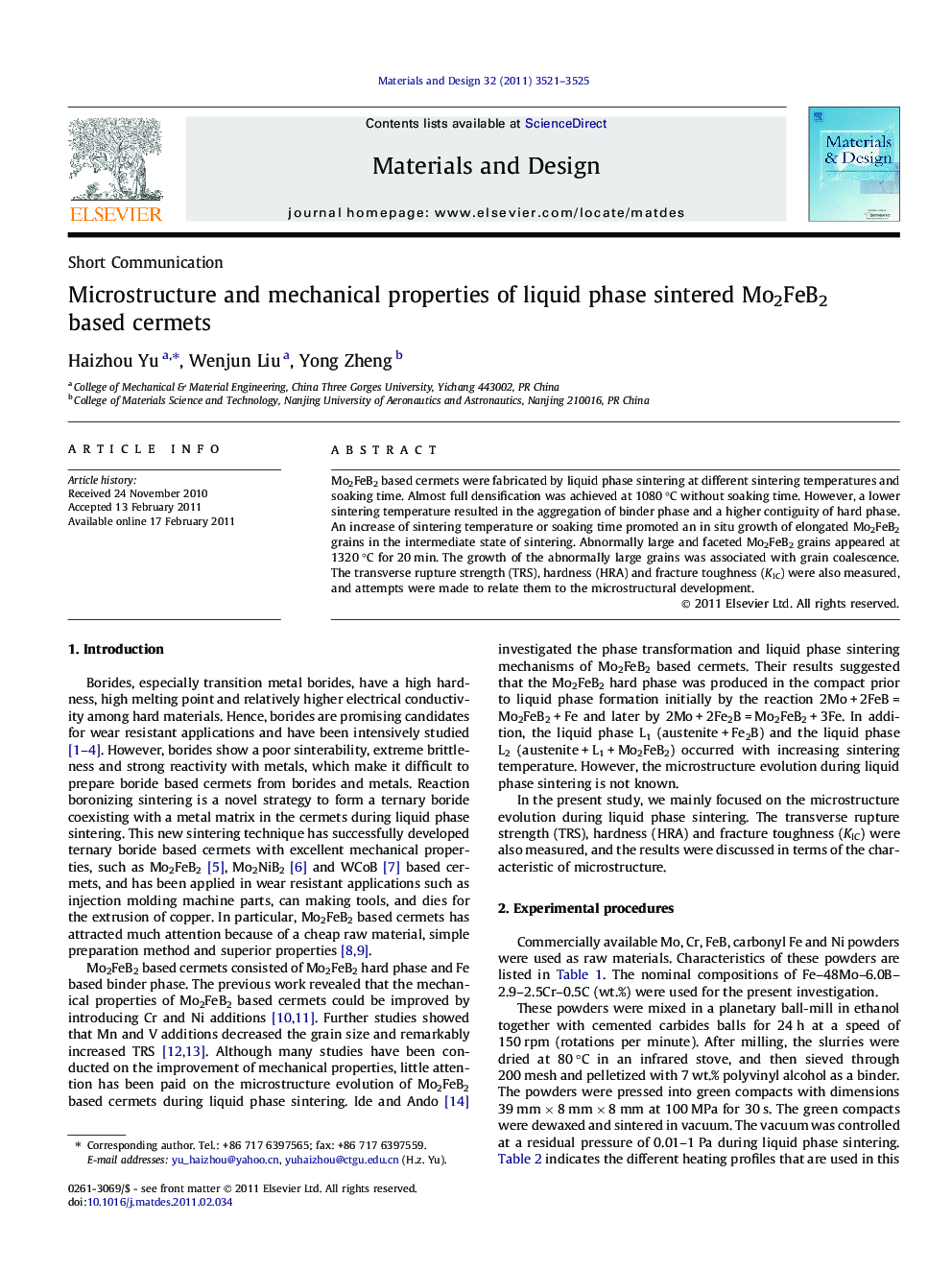| Article ID | Journal | Published Year | Pages | File Type |
|---|---|---|---|---|
| 831668 | Materials & Design (1980-2015) | 2011 | 5 Pages |
Mo2FeB2 based cermets were fabricated by liquid phase sintering at different sintering temperatures and soaking time. Almost full densification was achieved at 1080 °C without soaking time. However, a lower sintering temperature resulted in the aggregation of binder phase and a higher contiguity of hard phase. An increase of sintering temperature or soaking time promoted an in situ growth of elongated Mo2FeB2 grains in the intermediate state of sintering. Abnormally large and faceted Mo2FeB2 grains appeared at 1320 °C for 20 min. The growth of the abnormally large grains was associated with grain coalescence. The transverse rupture strength (TRS), hardness (HRA) and fracture toughness (KIC) were also measured, and attempts were made to relate them to the microstructural development.
Research highlights►The microstructure evolution of Mo2FeB2 based cermets was investigated. ►Increasing sintering temperature promoted an in situ growth of elongated grains. ►Abnormally large and faceted Mo2FeB2 grains appeared at 1320 °C for 20 min. ►The development of elongated grains increased the fracture toughness.
